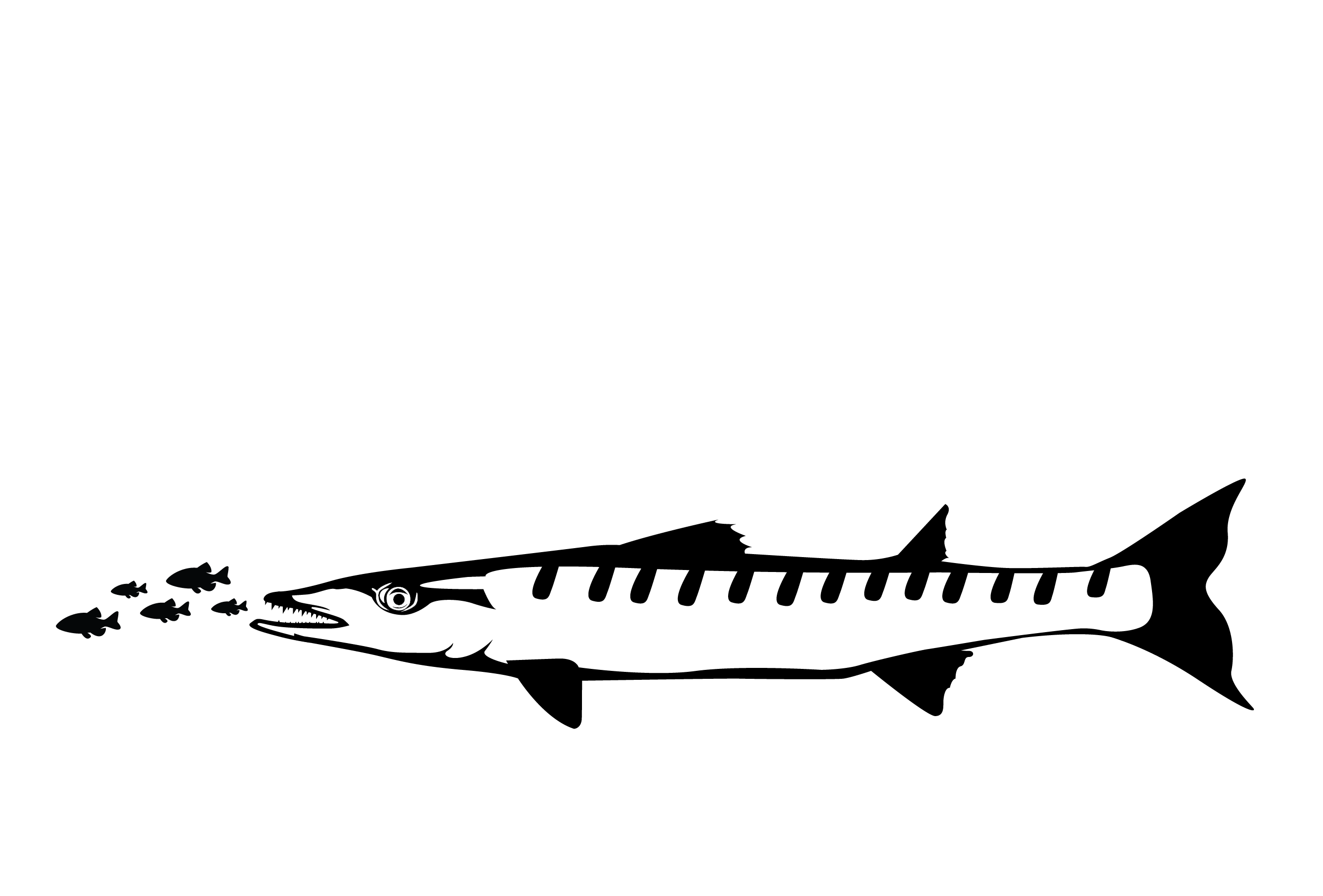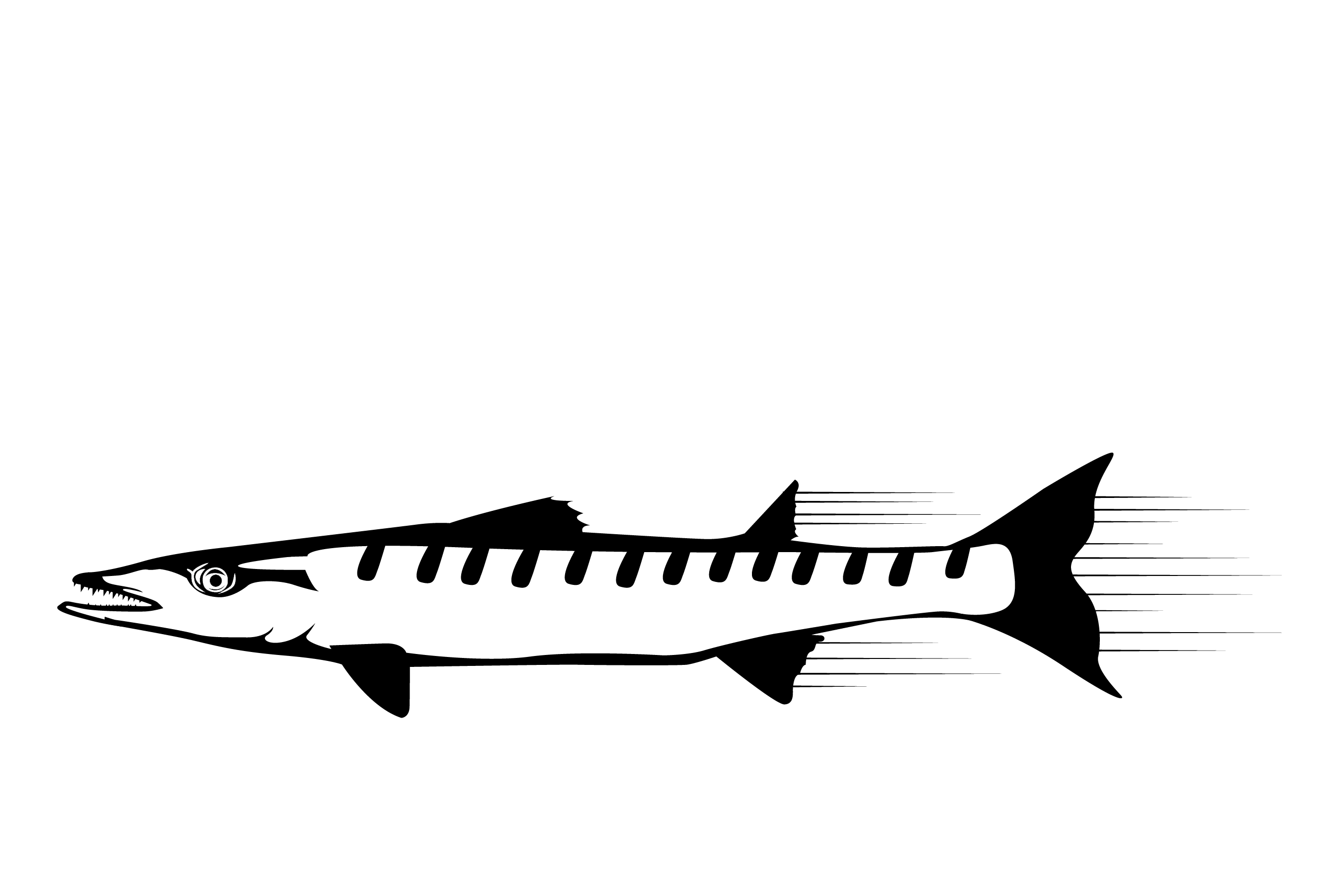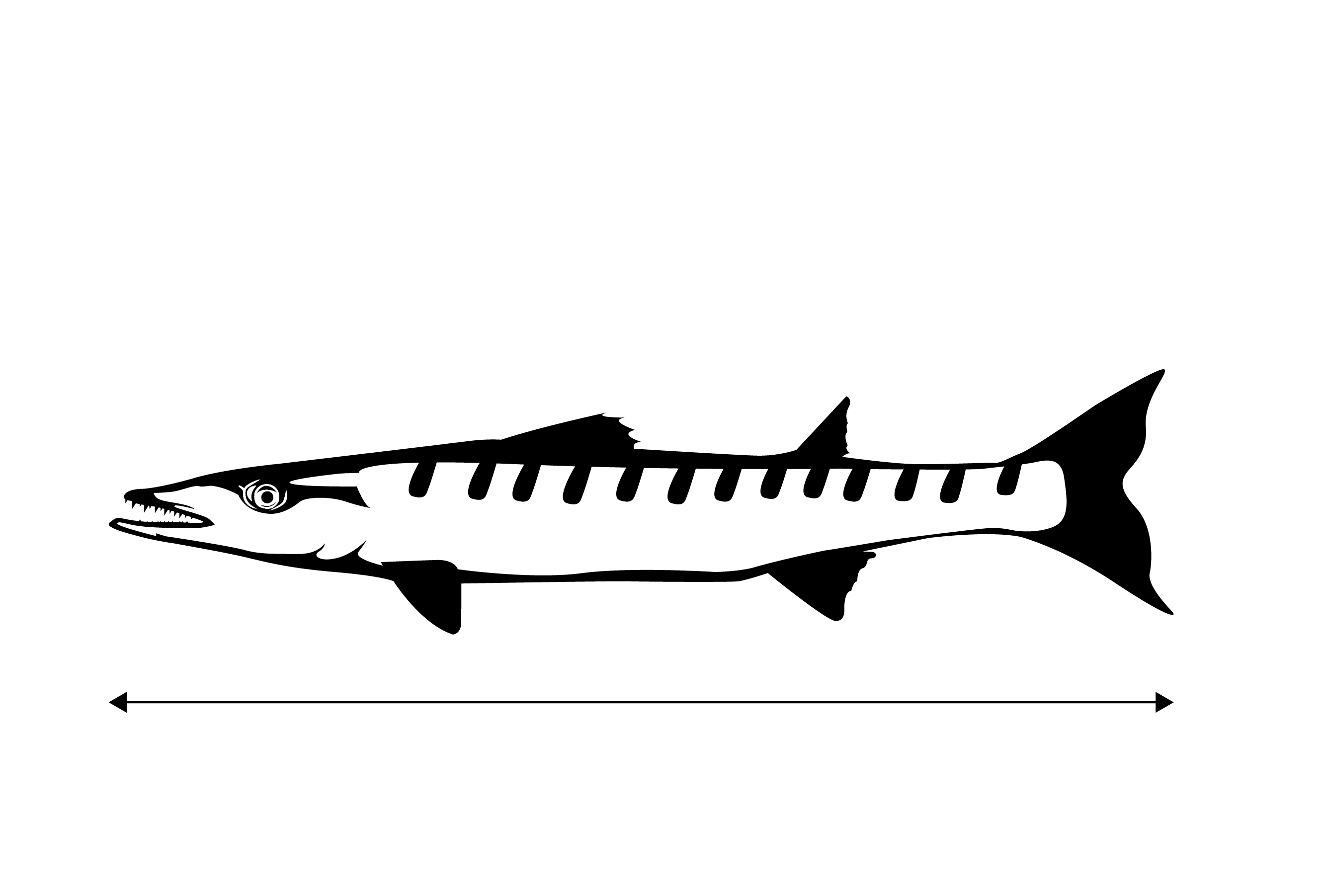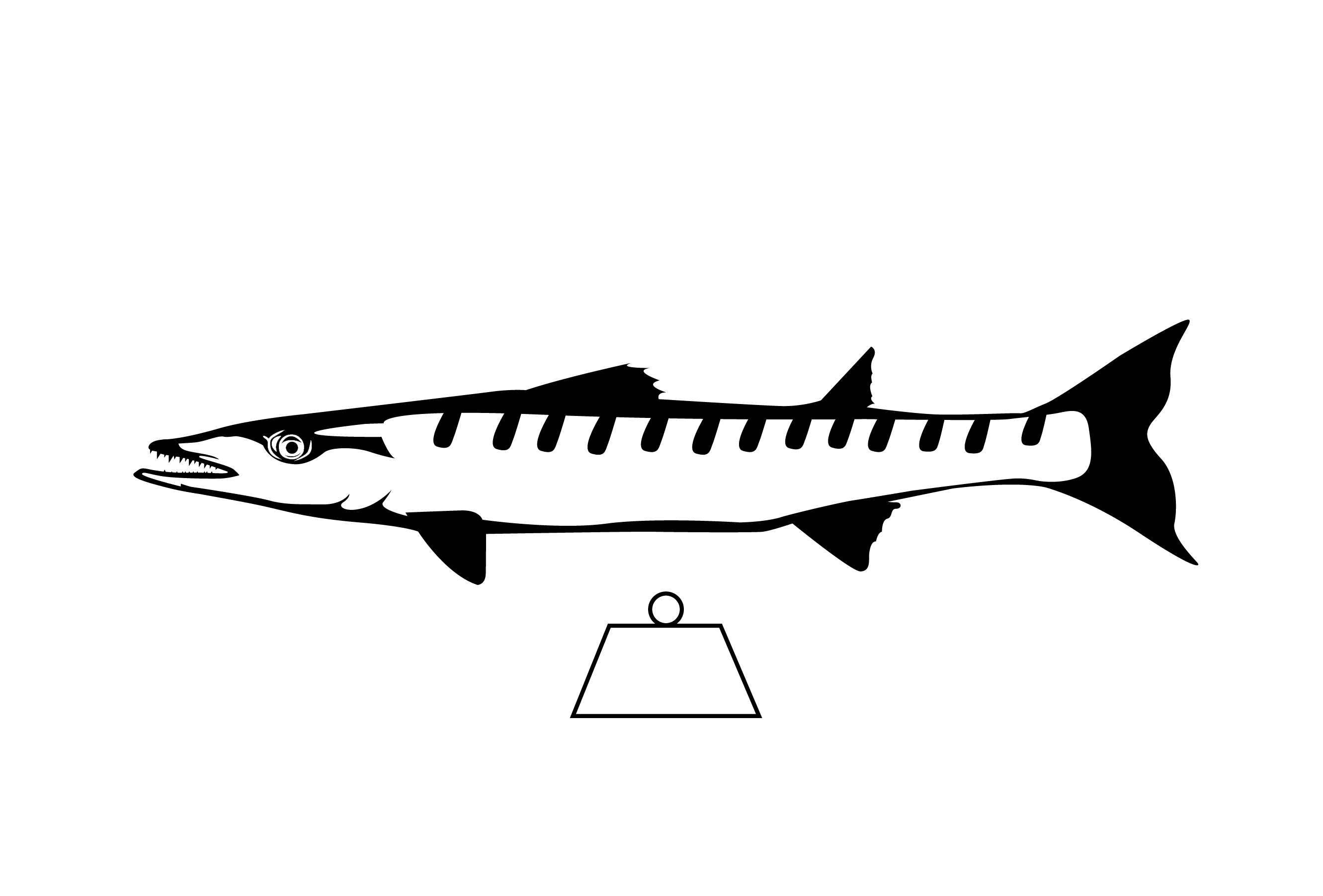For the large barracuda, an 11 or 12 weight rod set up with a balanced reel that has a strong and reliable drag system is most suitable. The same line rod and reel setup we use for giant trevally are ideal, negating the need for carrying an extra rod. The leader is constructed using eight feet of straight 100 lbs line attached to one foot of 80 lbs knottable wire. Either a bright or double uni-knot is ideal. This is a versatile system, and while not ideal for giant trevally, it will allow you to take a shot and play a GT if need be. Without using wire trace, the chances of landing a barracuda are slim, as their razor-sharp teeth have no problem cutting through 130 lbs mono.
Experience the ultimate family fly fishing adventure!
Blue Safari Fly Fishing Seychelles invites all families to join us for a fishing adventure of a lifetime. If you book a full-board fly fishing experience, your children 17 years and under can stay for FREE and are only charged for the fly fishing package and flights. Join us between June and October 2025 and experience some of the worlds best flats fishing with your loved ones making memories for life.
Enquire Now
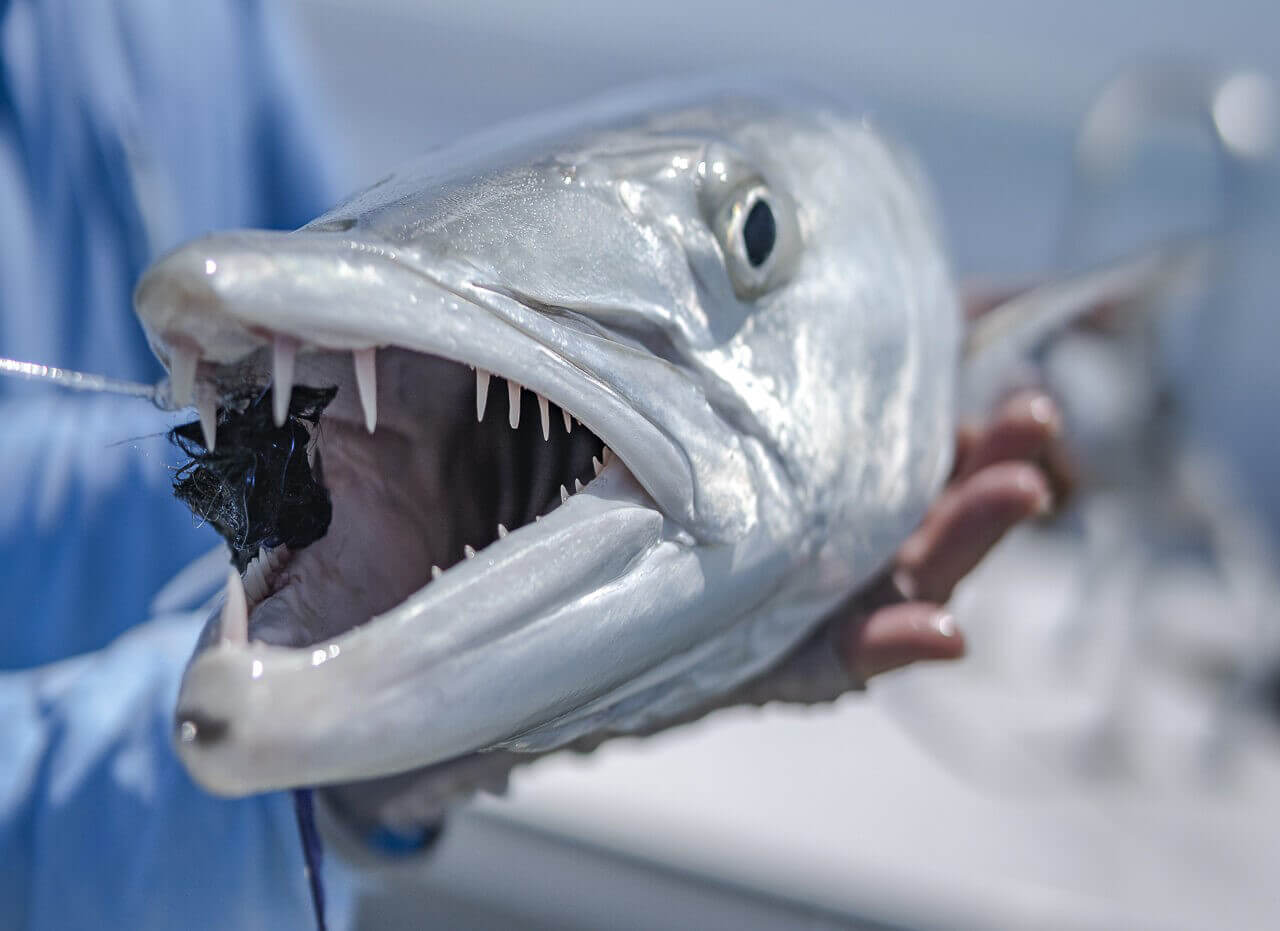
Fly Fishing for Barracuda
Found in many tropical to temperate waters throughout the Indo-Pacific region and subtropical Atlantic, the barracuda is a fiercely opportunistic predator that puts up a good fight. We love fly fishing for barracuda because you need more than the best barracuda flies, rods, and tackle – you need your wits about you!
Known as the perfect ambush predator, the barracuda is easily distinguishable with its elongated cylindrical body. Its long and pointed snout displays a distinctive undershot bottom jaw with razor-sharp barracuda teeth that stand out.
The body of the barracuda is covered in well-formed scales that give it an almost snake-like pattern. The colouration changes from blue-grey above to silvery, chalky white below, while a prominent lateral line extends from behind the head all the way to the tail.
The Search For Barracuda
Barracuda are generally not hard to spot. Up until the moment they attack, they are slow-moving saltwater fish, often lying motionless in ambush. Many of the large barracuda that inhabit the flats, mangroves, and surf are territorial fish and can often be seen on the same tides as they follow baitfish into the shallows. It is not uncommon to find barracuda over a metre in barely a foot of water.
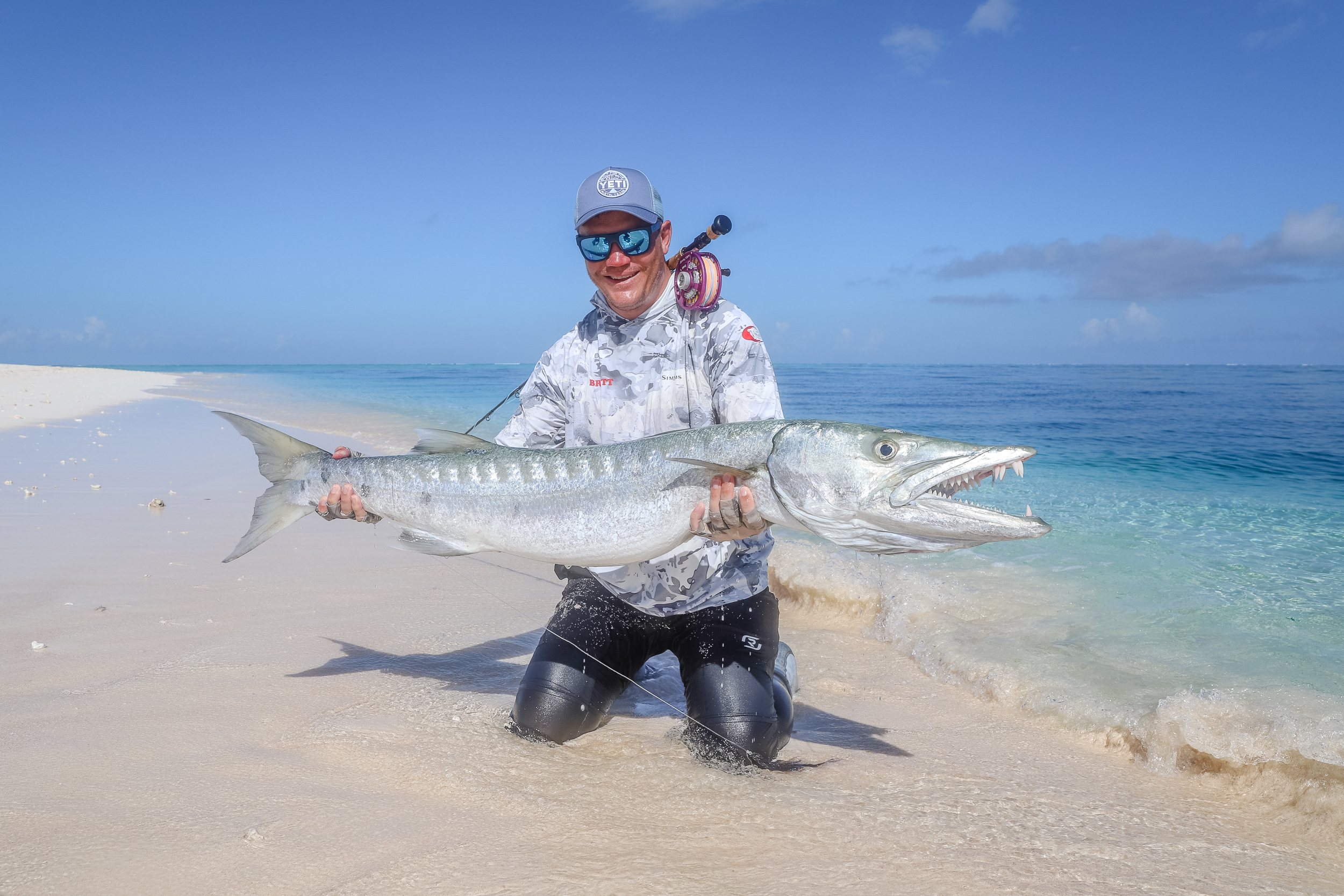
BEST FLIES & RODS FOR BARRACUDA
-
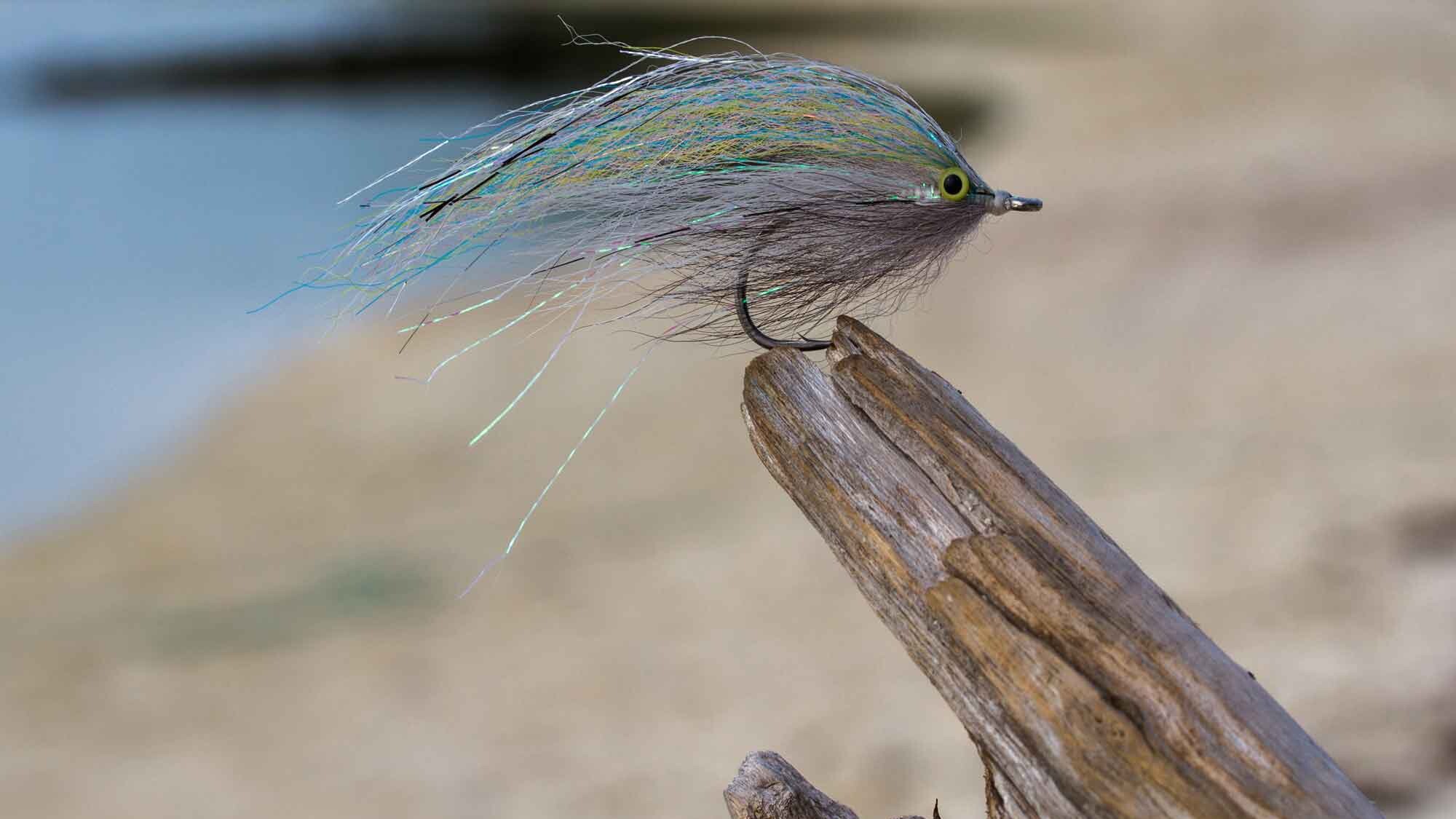
Deceiver Flies
Barracuda hunt bigger prey, so when targeting them, it’s ideal to use a baitfish imitation. A Deceiver pattern works best when lightly dressed, sparsely tied and stripped through the water as quickly as possible. Fishing on sand requires more natural colours such as white, tan, and olive. When fishing in the surf or on a darker bottom, using slightly darker colours such as black-red, blue, dark green, and brown to match the habitat is suggested.
-
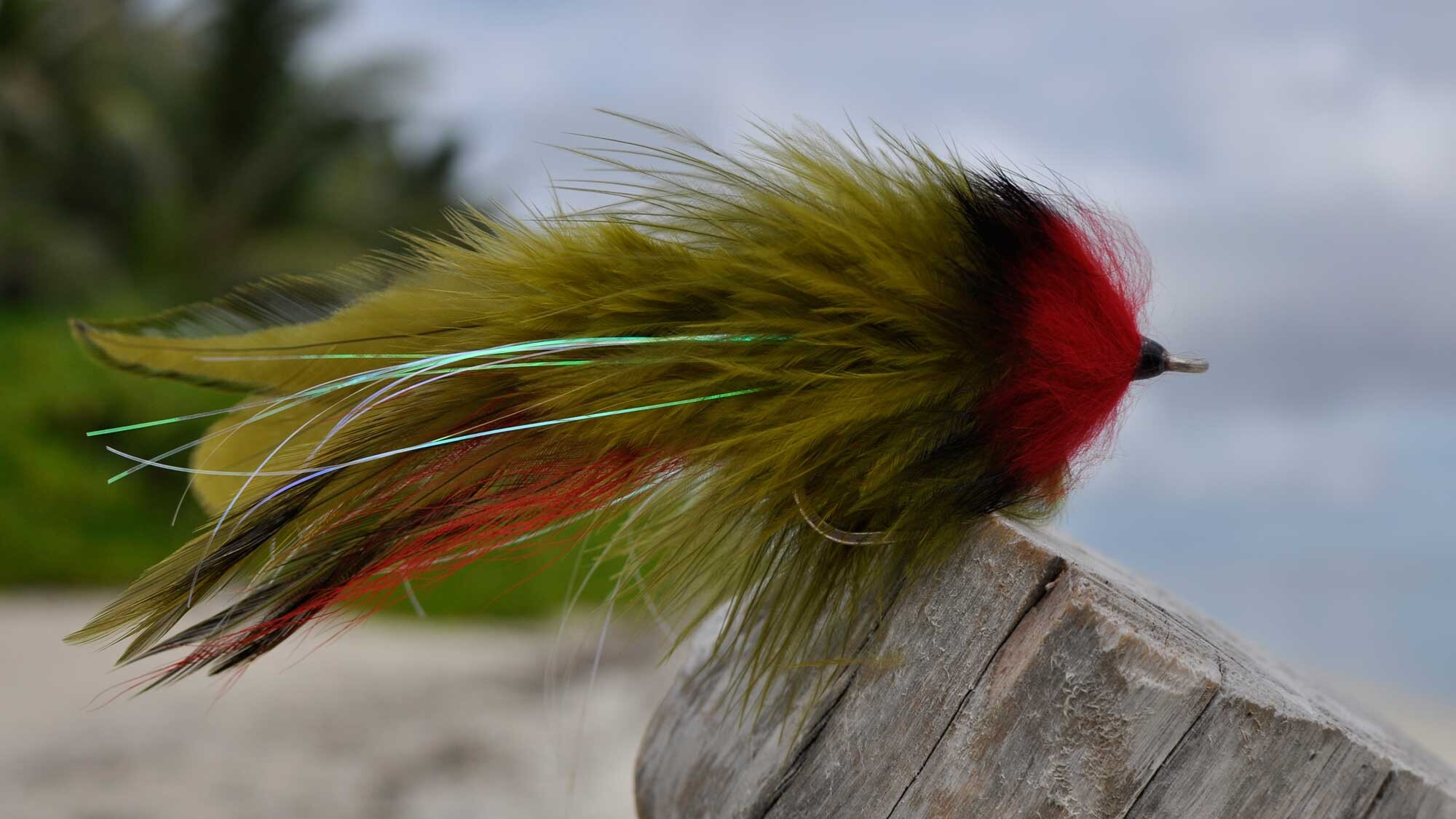
Sempers
The sempers fly, like all semper patterns, have an incredible movement in the water, which makes them irresistible to any cruising Barracuda fish. These flies are generic fly patterns, which can copy various lifeforms, such as squid or baitfish. Made from mostly natural materials, such as bucktail and feathers that give it a great movement underwater. Do note that with these flies, long and fast-as-possible strips or retrieves need to be made.
-
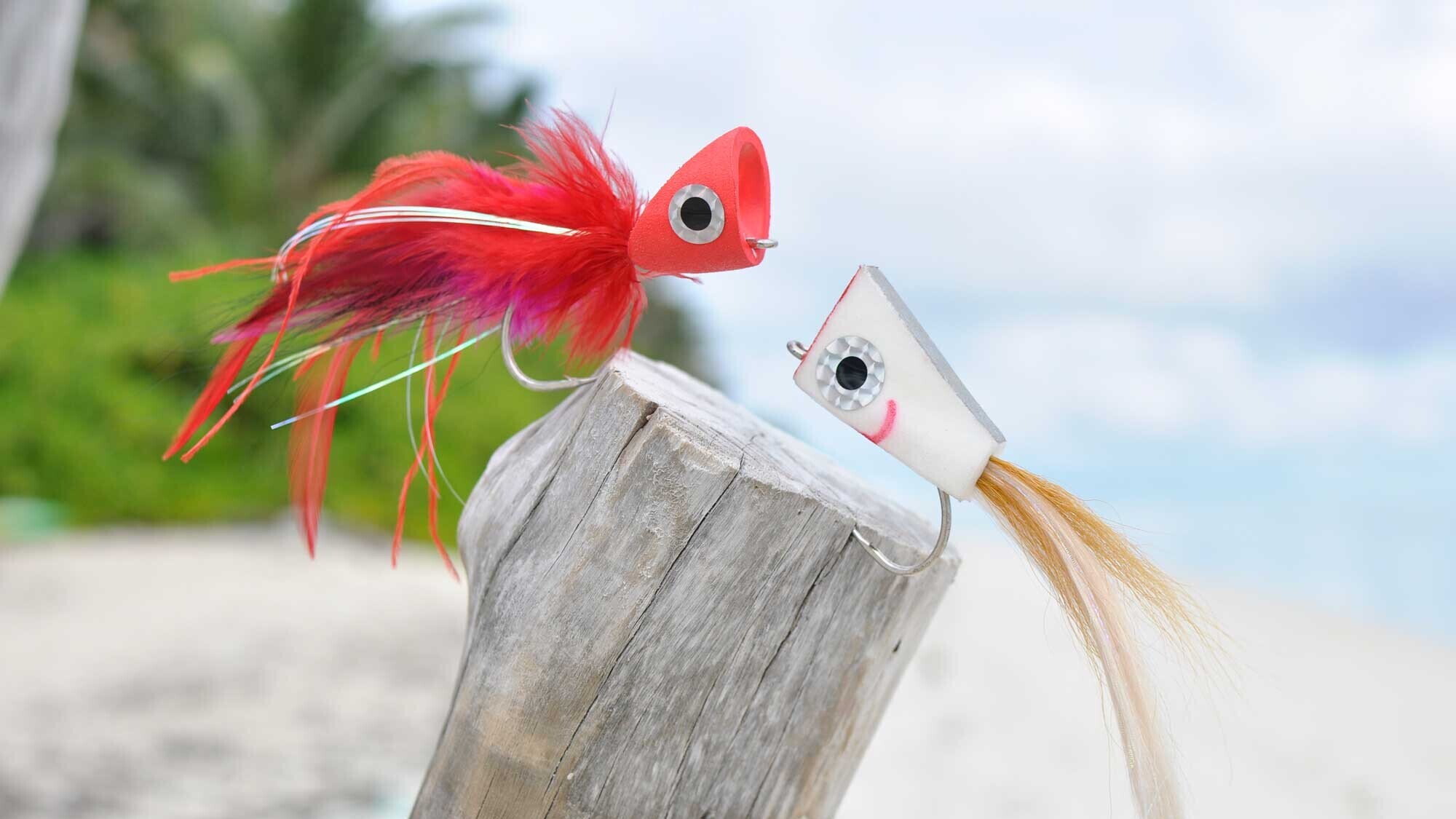
Poppers
Traditional popper patterns are becoming very popular as they create a greater disturbance on the water, which can assist in drawing the fish’s attention from some distance away. From the splash and sound they produce, these flies will be noticed from a much further distance. Poppers are generally fished over deeper waters, such as drifting on the skiff in the lagoons, casting into the channels as well as floating on the shallow outer reefs of the atolls.
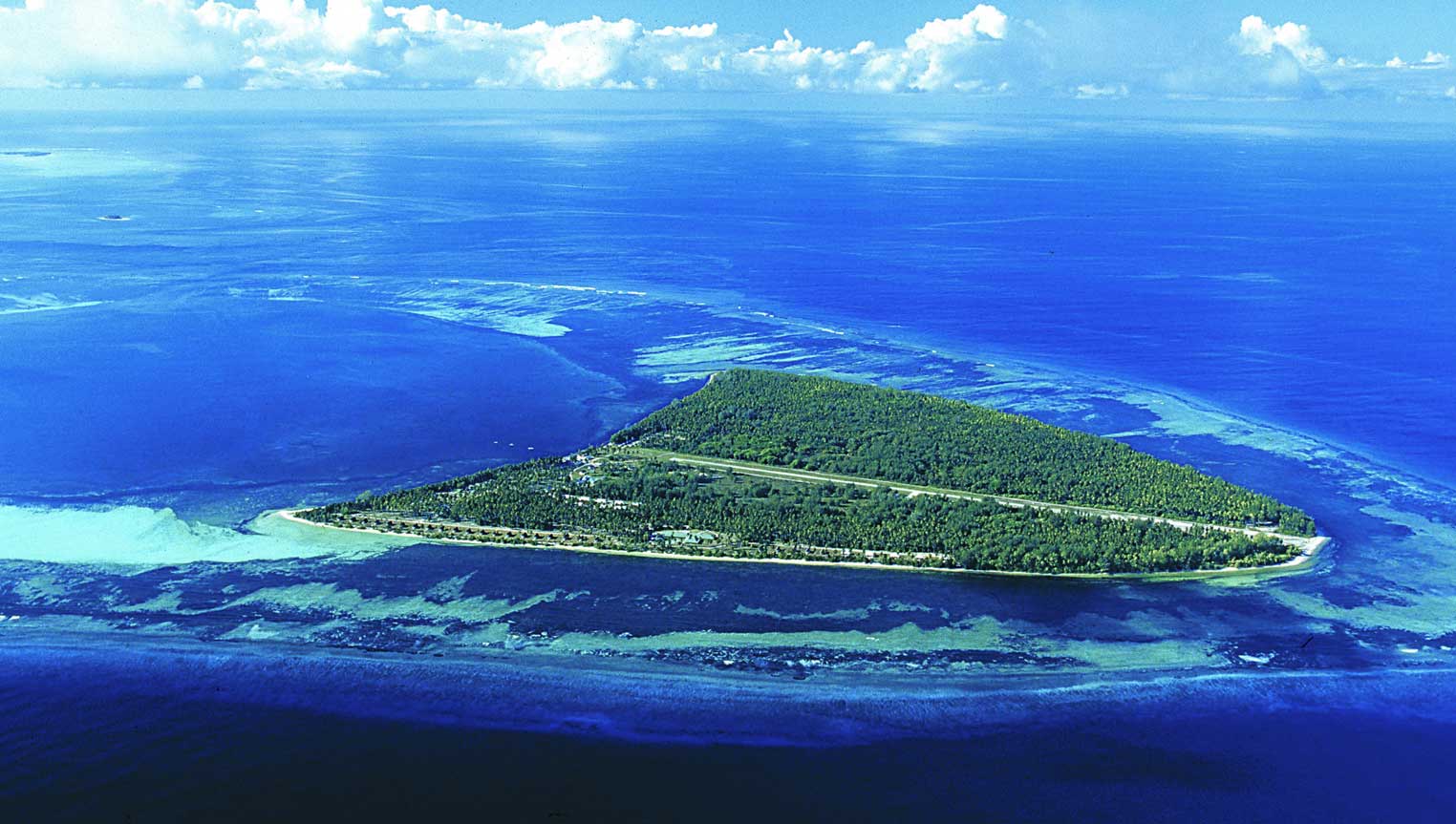
BEST TIDES FOR BARRACUDA
As a rule of thumb barracuda are targeted throughout the tidal range. Due to them being ambush predators they are often found on coral heads during low tides and higher up on the flats during higher tides hunting smaller fish species on high spots.
Making The Catch
A good tip when making the cast is to look at where you want the fly to land rather than the fish, as this helps prevent spooking the fish by landing the fly too close. Unlike small barracuda, large barracuda must be tempted onto the fly, so let the fly sink. Once the fish is 2 m (6 ft) away, one long, fast-paced full extension strip works wonders, then stop. Big fish will reverse to build a run-up before coiling like a spring and slamming the fly – there will be no doubt when it takes the fly! If there is no reaction or he moves away, repeat the long strip, until you get a positive reaction.. On taking the fly, keep the rod low and strip set. Several long, hard sets are needed. Clear your line and keep your rod at a low angle. Play the fish and allow the drag on the reel to tighten. Big barracuda do jump, but when using a 6/0 hook and 100 lbs line, there is little need to bow to the fish. Leave The Fly & Let Him Hammer It! If there is no reaction or he moves away, repeats the long strip. Do this until you see the fish’s body language becomes more positive. On taking the fly, keep the rod low and strip set. Several long, hard strip sets are needed. Clear your line and still keep your rod at a low angle. Play the fish and allow the drag on the reel to tighten. Big barracuda do jump, but when using a 6/0 hook an d 100 lbs line, there is little need to bow to the fish.
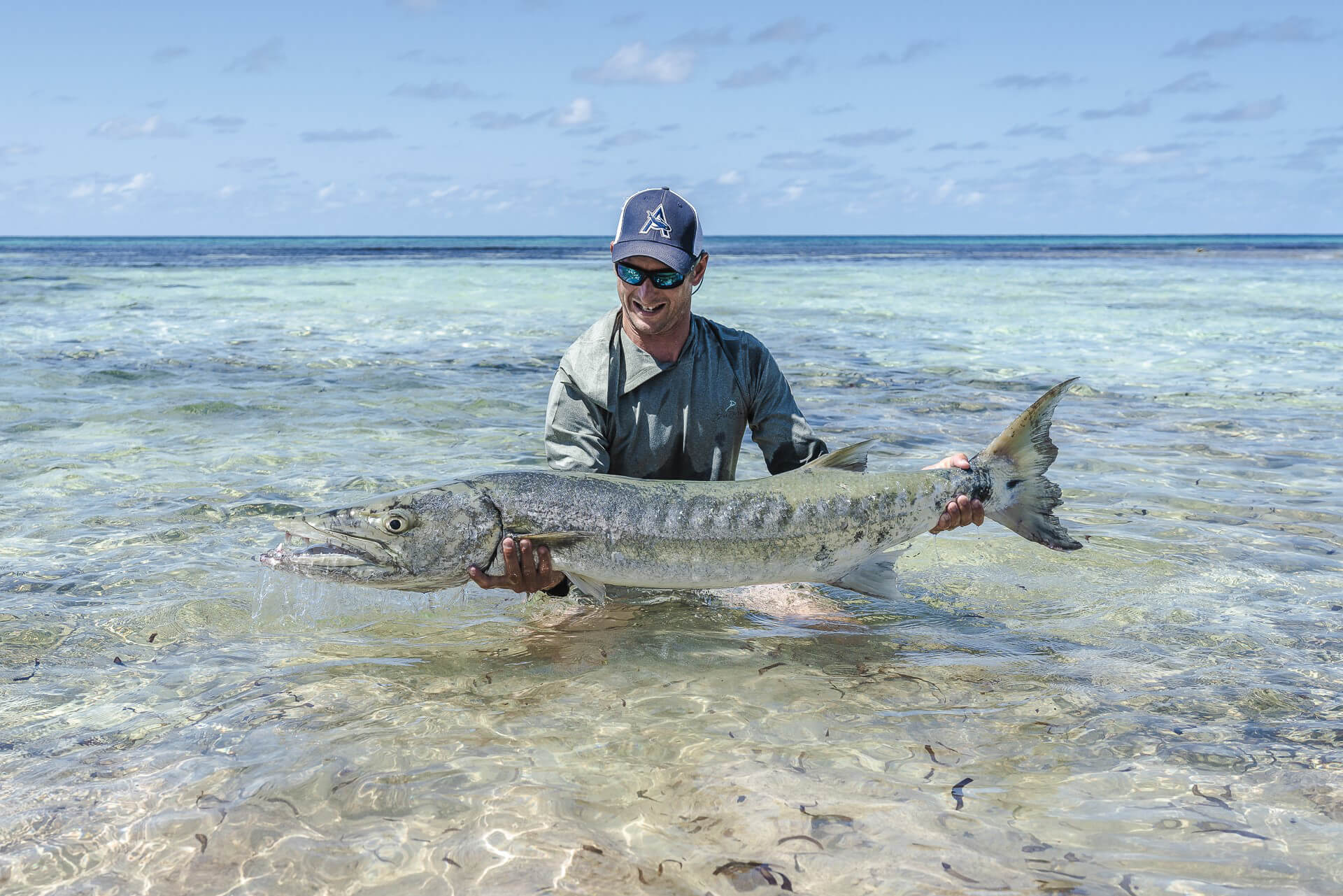
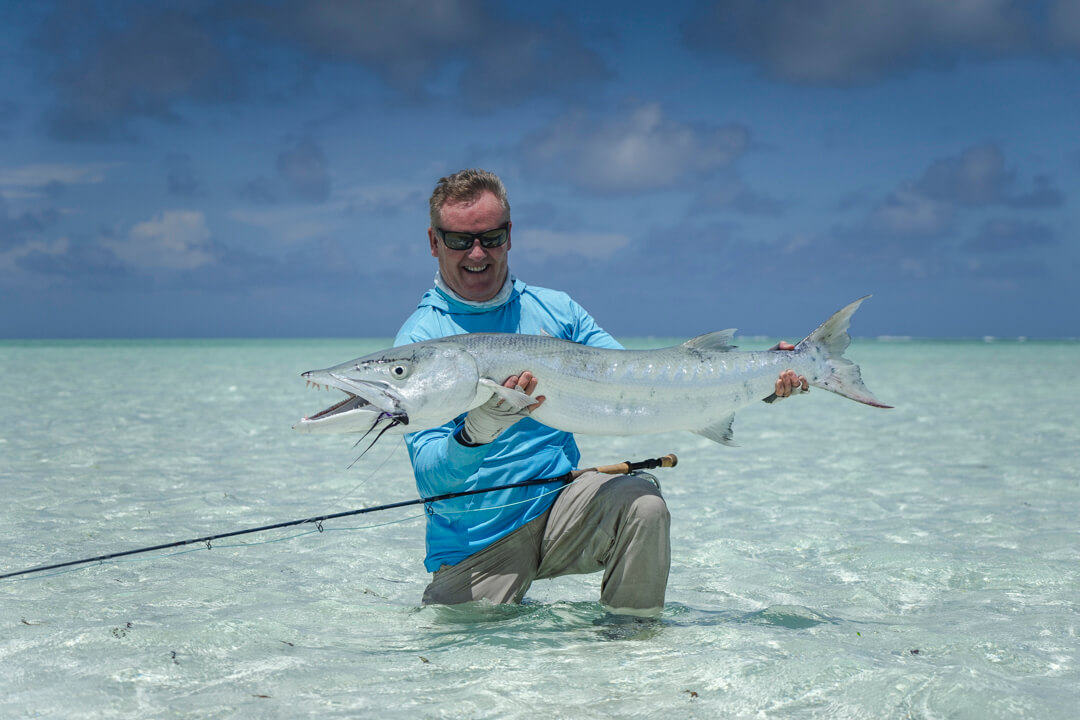
Barracuda caught on a fly at AFC destinations
Some of the big barracuda that did not get away.
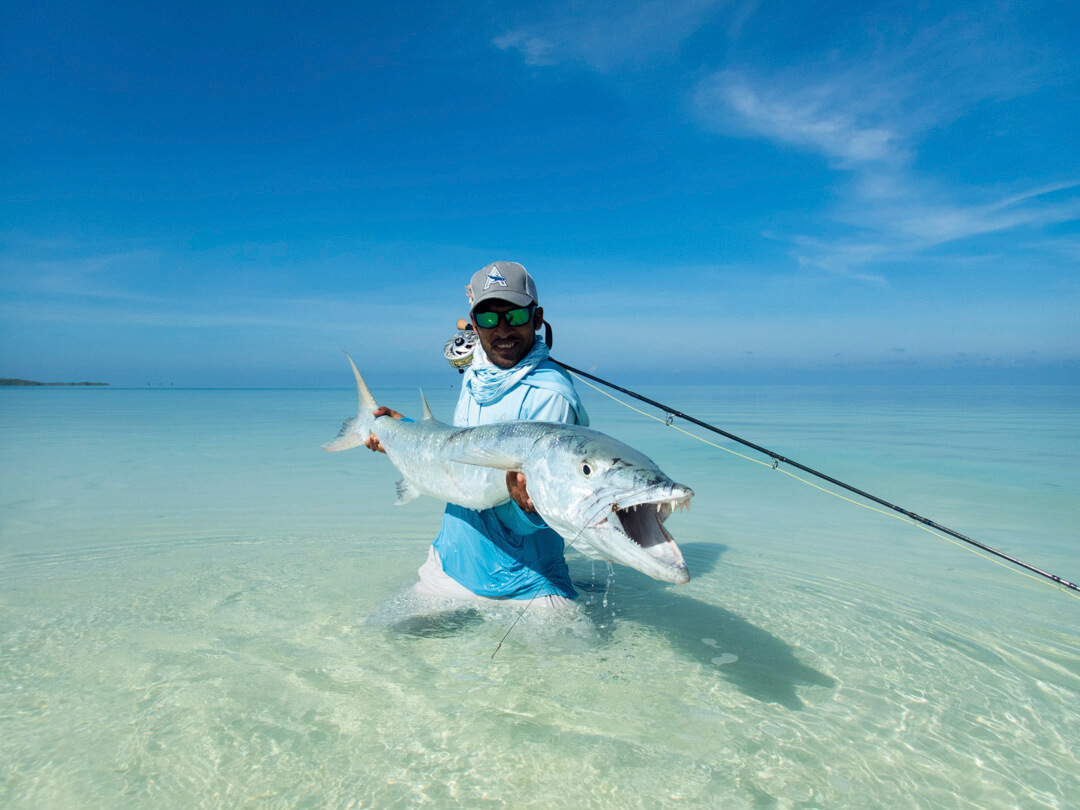
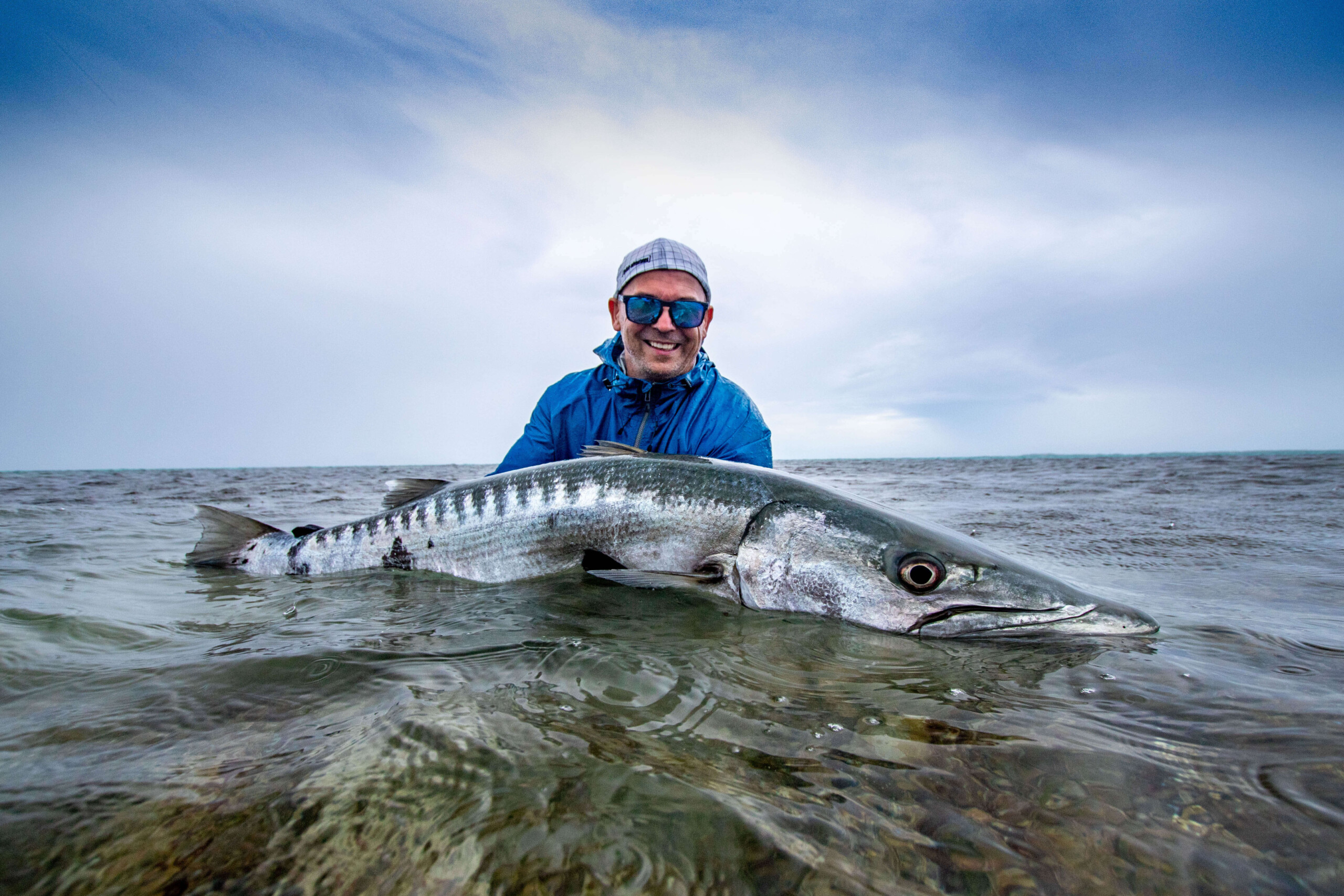
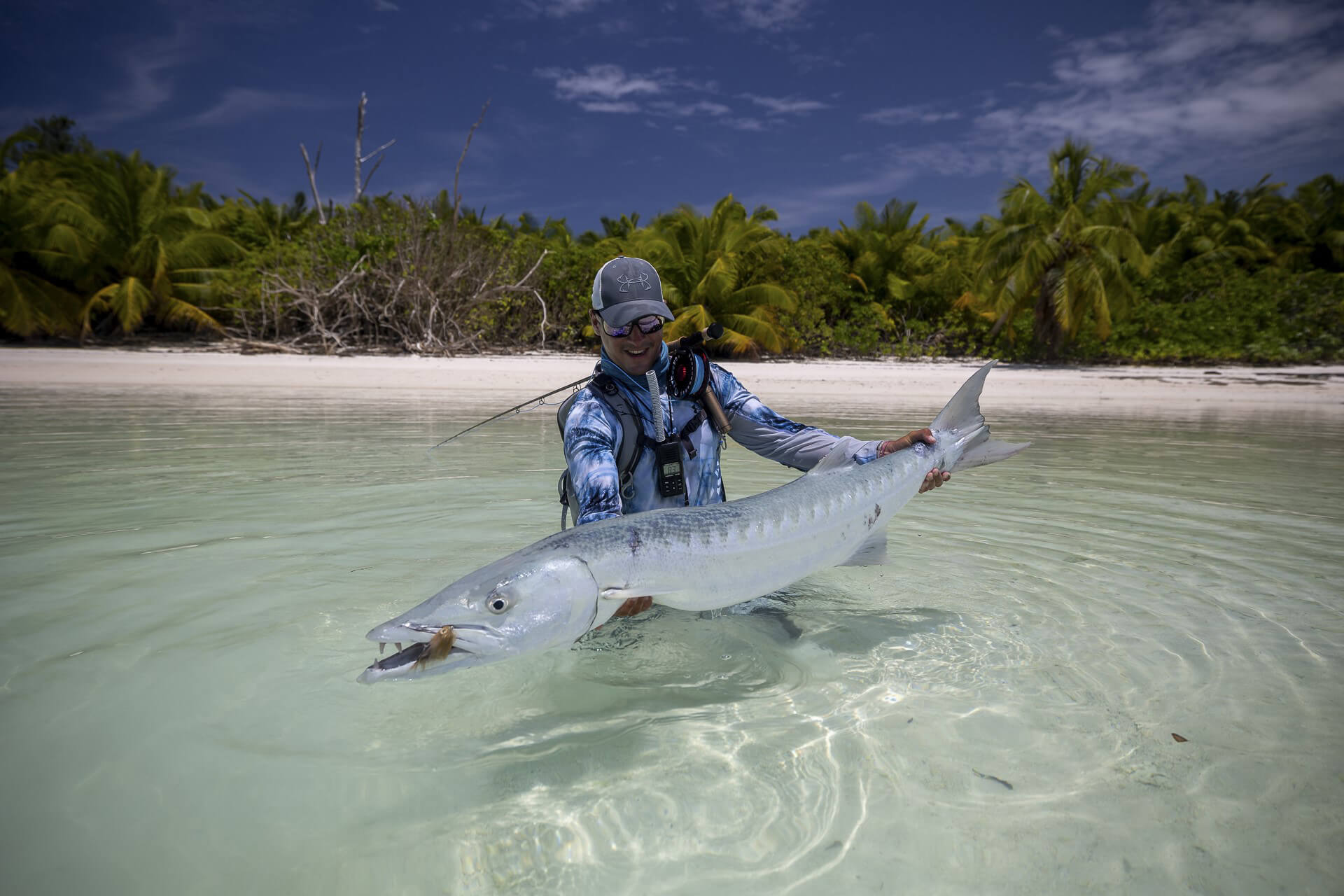
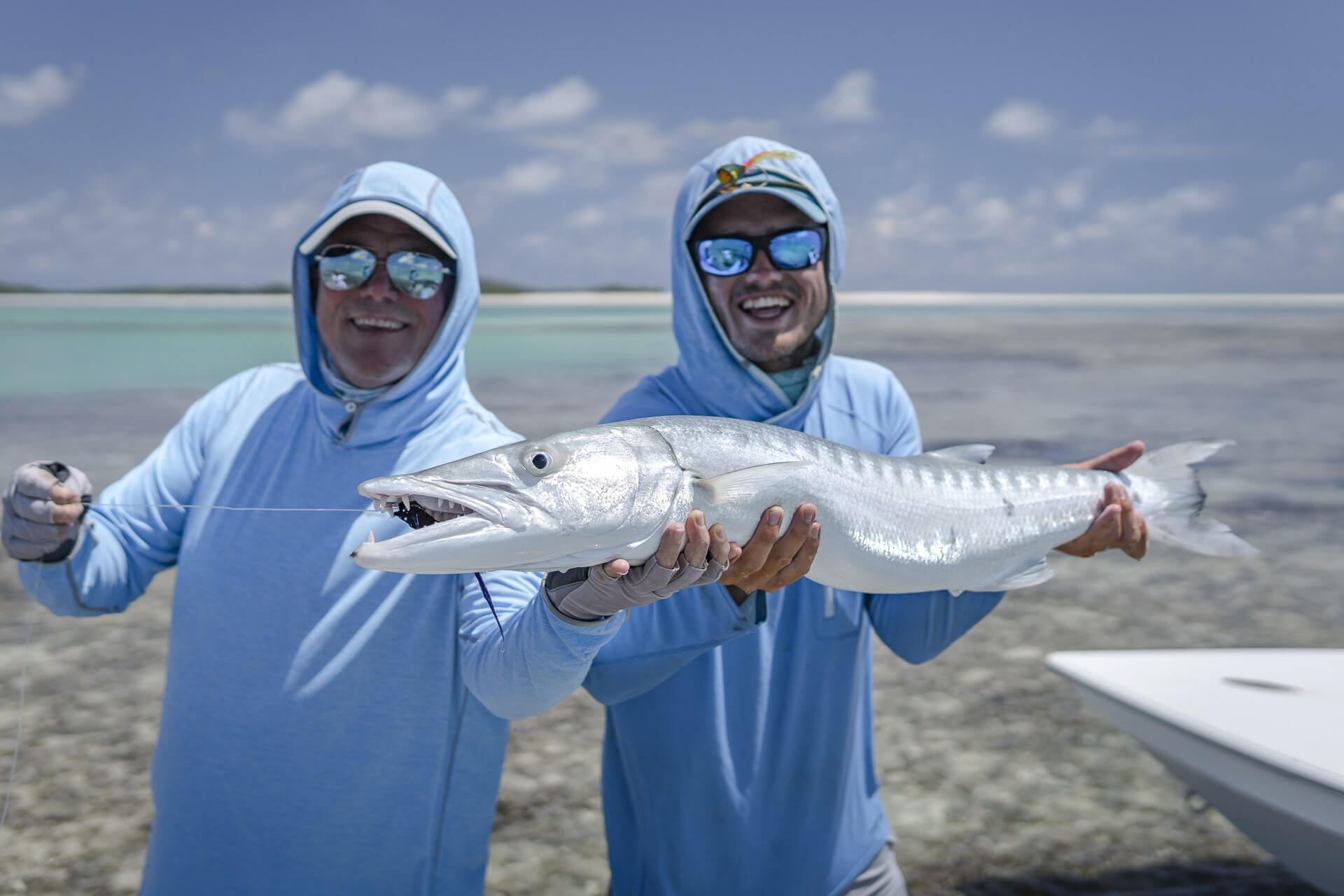
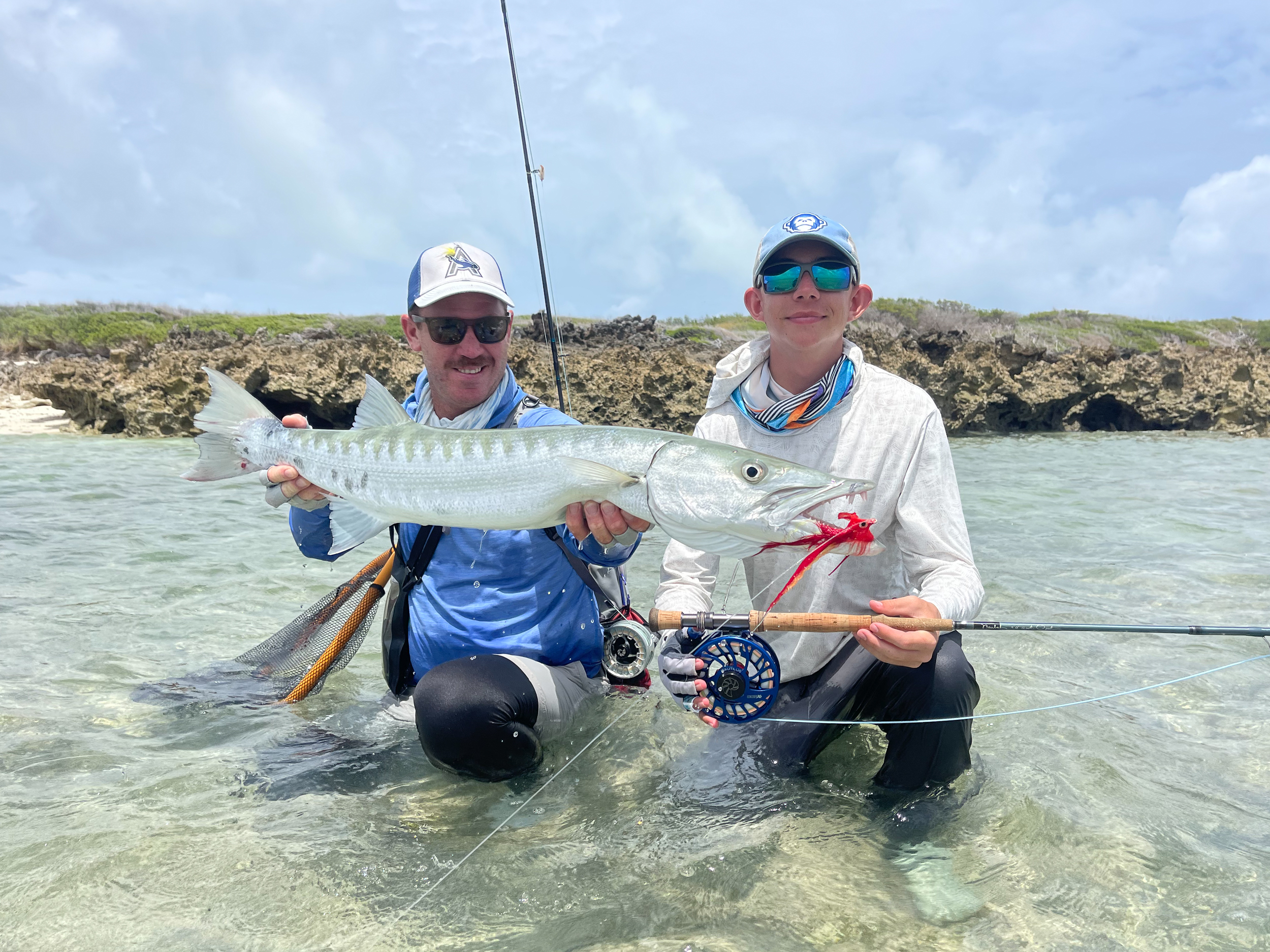
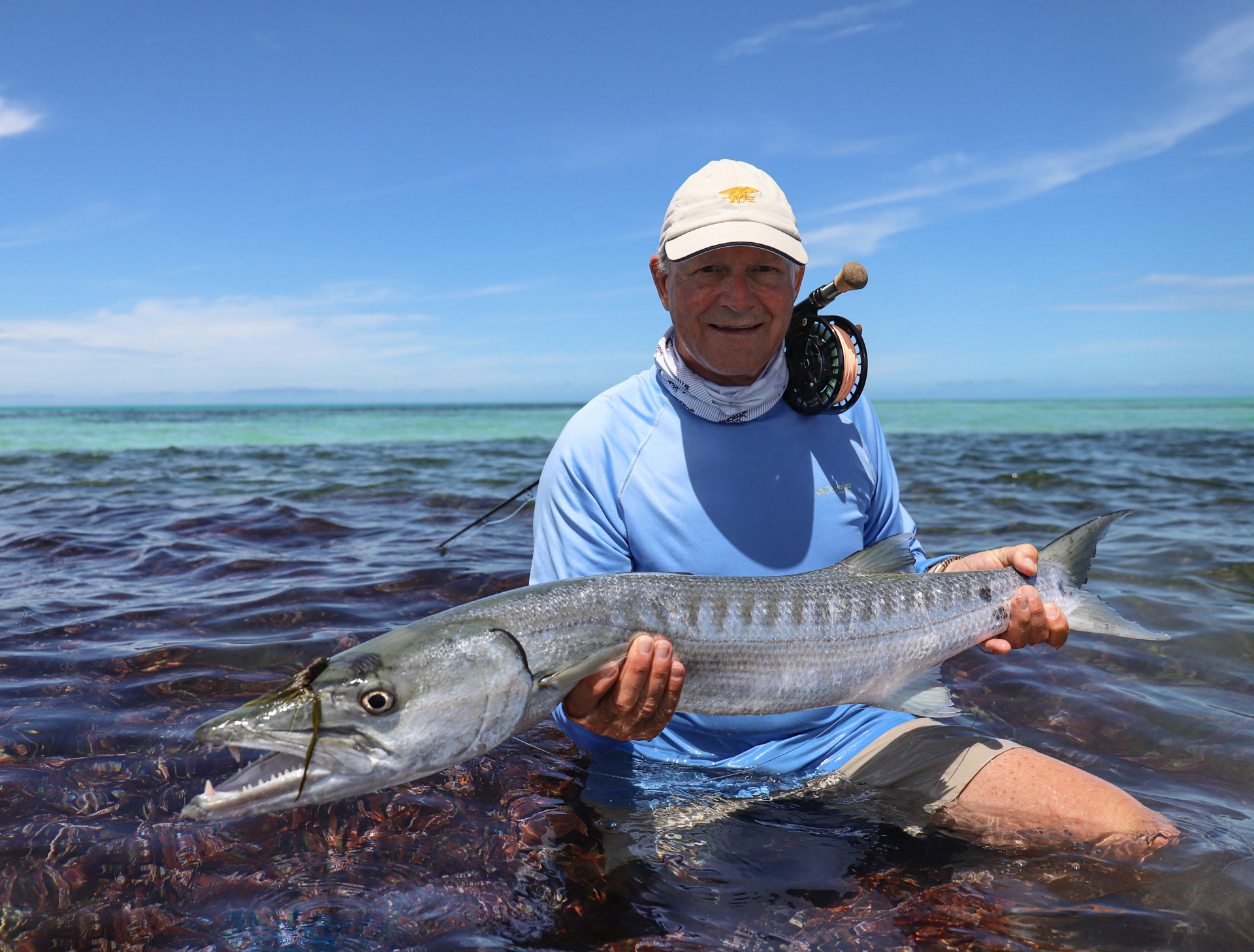
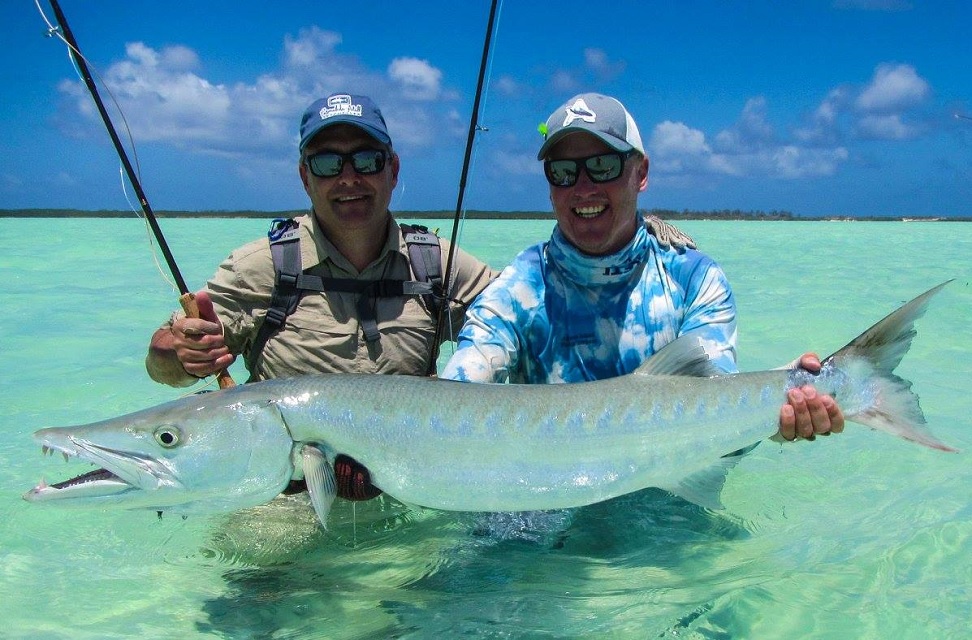
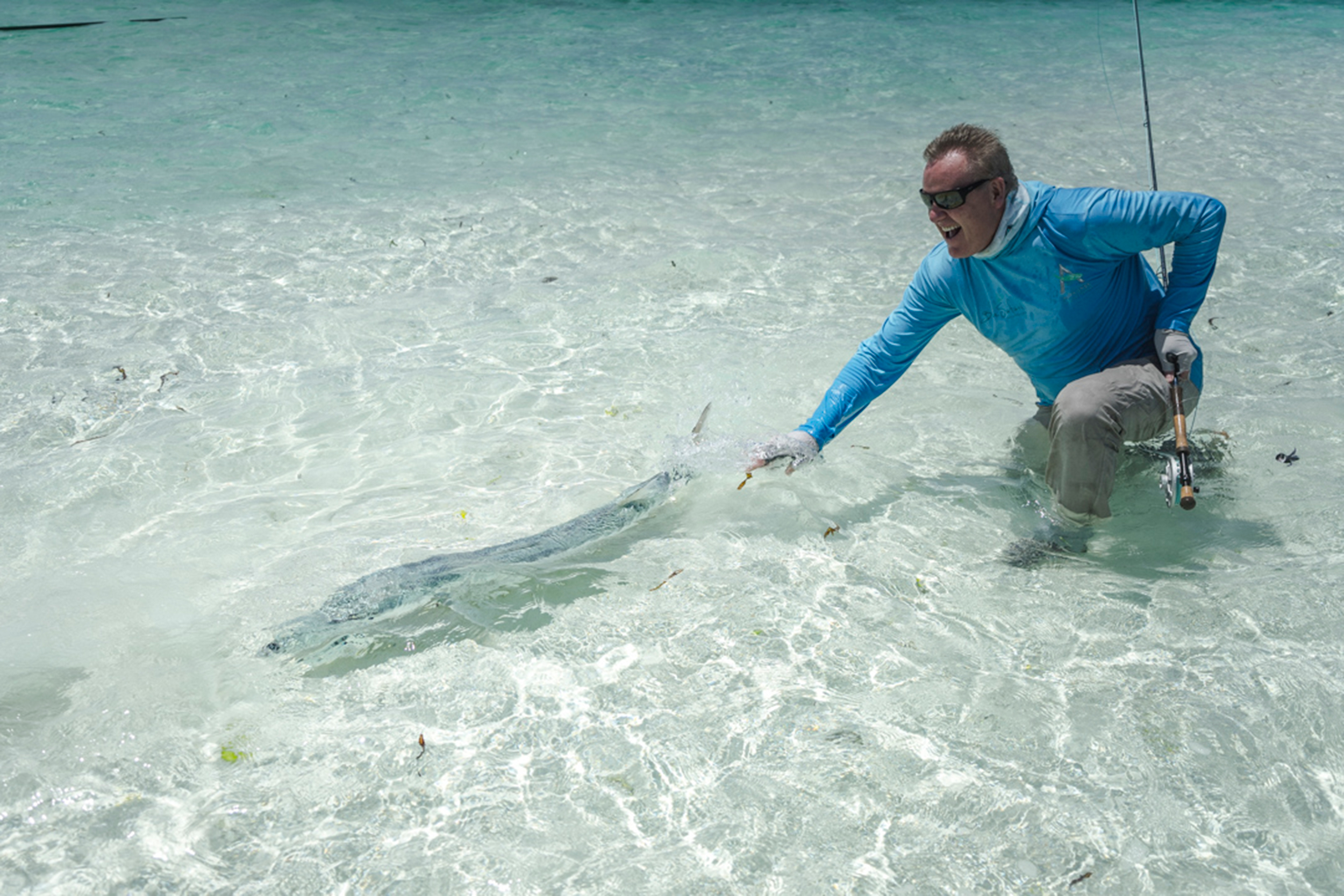
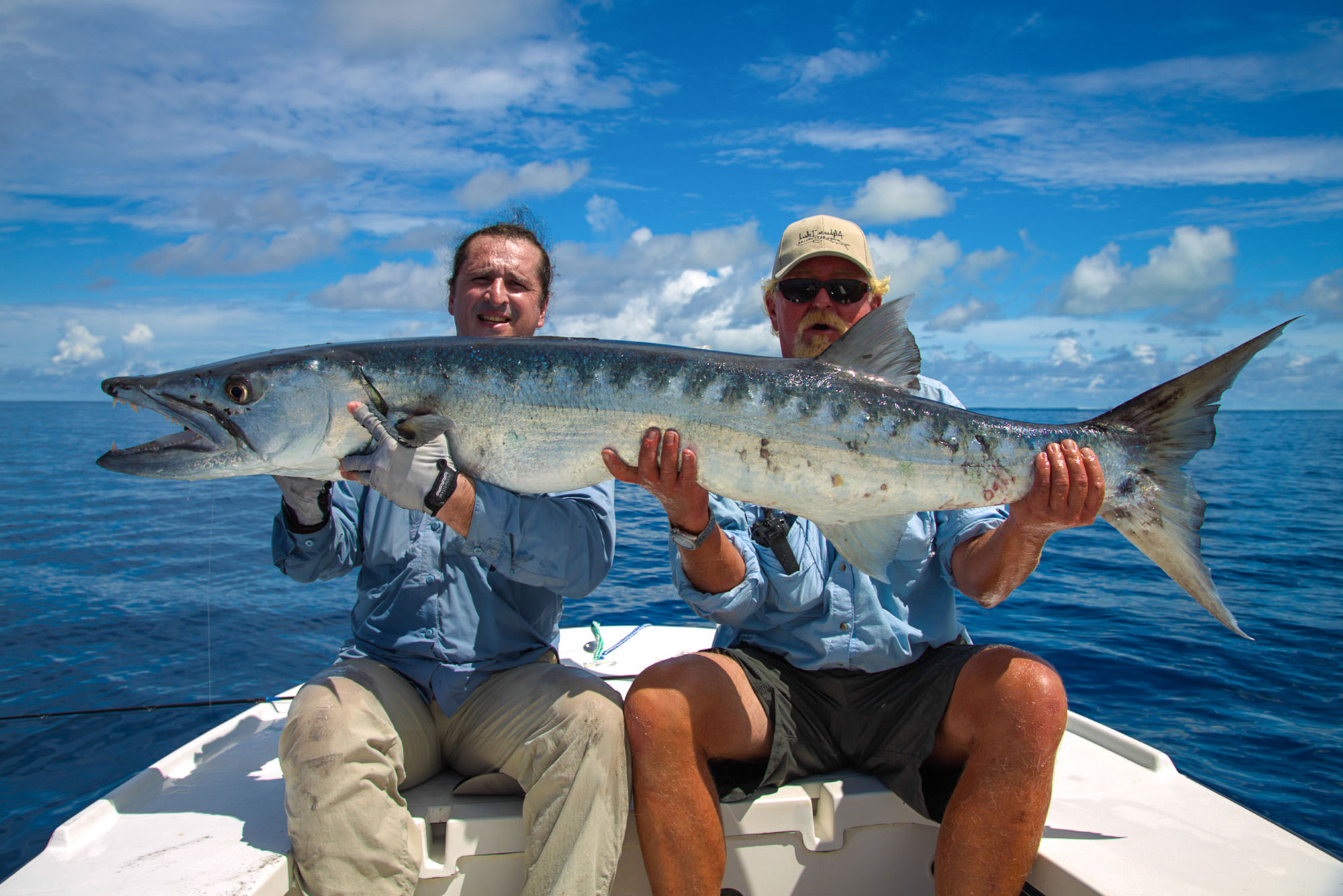
Latest Blog Posts
-
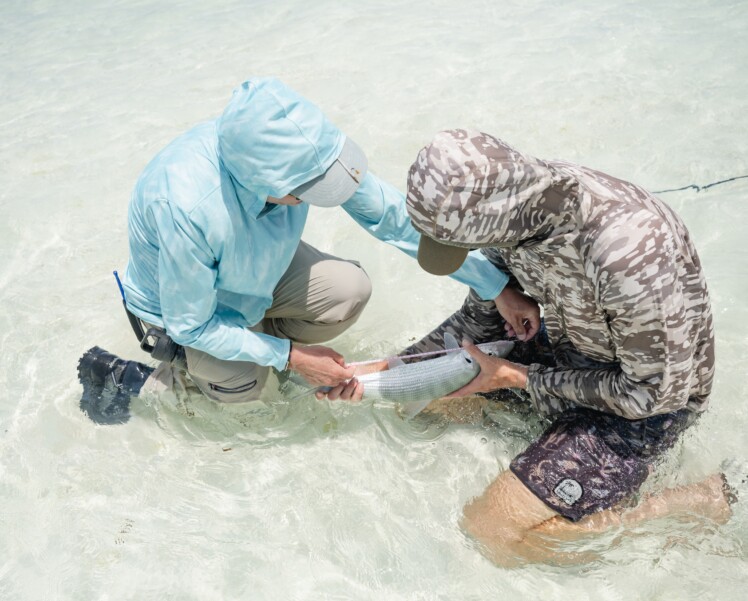
Conservation in Action: Protecting a Key Species in Our Fishery
Read More -
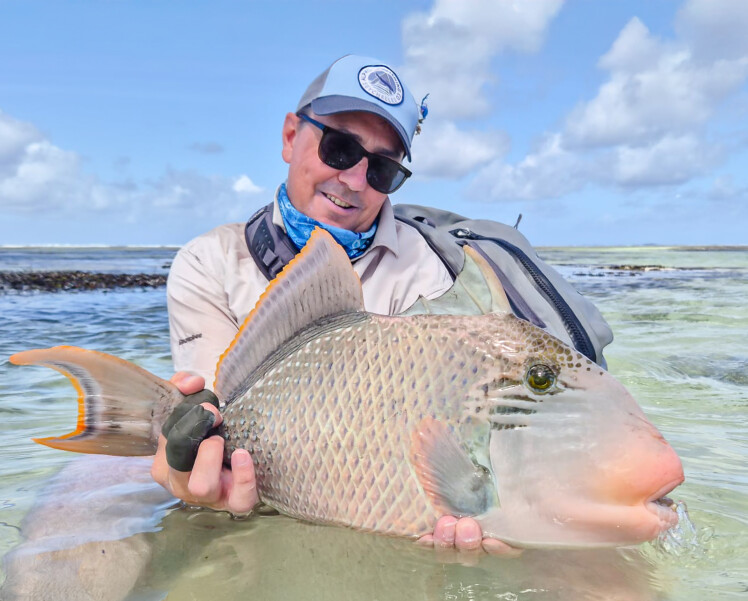
ALPHONSE ISLAND FLY FISHING REPORT | 24 MAY – 31 MAY 2025
Read More -
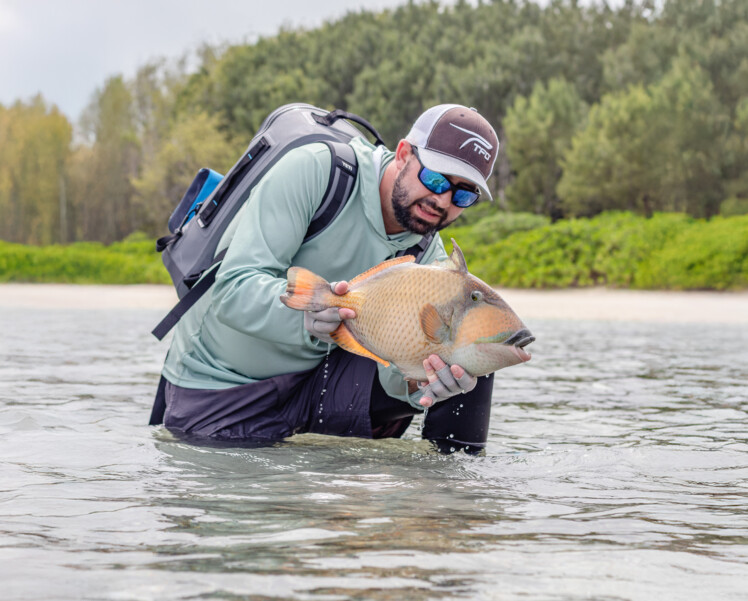
ALPHONSE ISLAND FLY FISHING REPORT | 17 MAY – 24 MAY 2025
Read More

